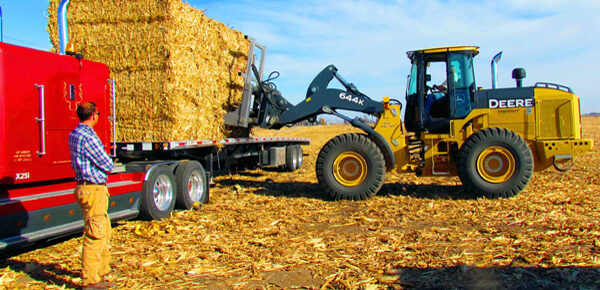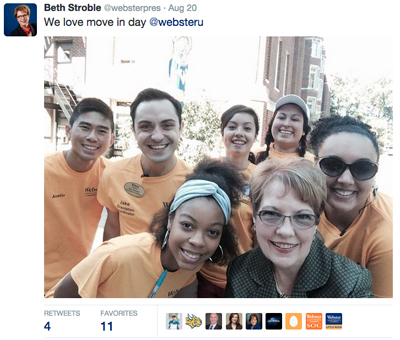By Cathy Sandeen
On January 4, 2021, I arrived at my position as the new president of Cal State East Bay. The parking lot was virtually empty, and not just because we were returning from the winter break. The San Francisco Bay Area was on lockdown, and there were at most 100 people on a campus with a student enrollment of nearly 15,000. In the months prior, I was recruited, interviewed, announced, and onboarded into a chief leadership role without in-person introductions or a site visit due to the COVID-19 pandemic. The reality of being a new president in a virtual world greeted me just as surely as the “East Bay” monument letters on our campus.
This isn’t my first chief executive position. In Wisconsin and Alaska, I began my presidencies/chancellorships in the traditional in-person way, so I have a basis for comparison. After three-plus months into my new job—still mostly virtual—I must say, I don’t hate it. In fact, I see advantages to beginning a new presidency this way: the surprising inclusiveness of virtual meetings, the efficiency of scheduling without travel, and the license to be innovative.
Virtual is the new normal
First, I am grateful for robust and accessible video conferencing platforms. My new campus community was accustomed to the technology when I started my position nine months into the pandemic. Coming in as a new president and connecting with internal and external constituents via video is not as foreign as one might expect. Instead, much of the virtual meeting etiquette—moderating meetings, using chat and screen sharing, and showing grace and patience for the inevitable failure to unmute—was well established by the time I arrived. It’s hard to imagine how we would have accomplished our work if we were confined to using rudimentary technology like email and telephone conference calls.
Up close and personal
I used the same framework for the current virtual mode as I had for past onboarding in an in-person manner. The leadership team and I developed a comprehensive, prioritized list of internal and external stakeholders with whom to connect. Yet this time, planned video conference meetings eliminated extensive travel time, which is usually a significant challenge in a busy metropolitan area like the San Francisco Bay Area. Therefore, we could schedule far more meetings in a given day or week, allowing me to connect with far more individuals.
In addition, most virtual meetings include far fewer attendees than the “cast of thousands” events that characterize the typical introduction of a new president. Ironically, in a virtual mode, more people may be getting a closer look at me. I interact with important stakeholder groups in smaller convenings, focused on a narrower range of highly relevant subjects. It has been meaningful, and we sign off with the promise of a future face-to-face conversation.
I also find virtual meetings to be more inclusive than in-person meetings. There is no “front row” or jockeying for position to be near the new president, and every attendee has the same size box on the screen, regardless of title. It may be easier for participants from traditionally marginalized groups to participate fully and ask questions—especially using the chat and Q&A functions on the video platform.
Fostering innovation
The virtual meeting technology has also increased participation in many larger after-hours events, furthering our ability to engage constituents with the university. We are rethinking events that would have been planned at busy venues or on campus in the middle of a workday, and out-of-the-area alumni and volunteers find it convenient to participate in a virtual event. We hosted a series of well-attended online “fireside chats” that provided more alumni an opportunity to interact with the new president than may have occurred in “normal” circumstances. We provided a link to a videotaped topping-off ceremony to celebrate the construction midway point for a major new building, which attracted twice the number of live viewers than those who attended the initial groundbreaking in 2019. We held our “Car-mencement” last month—a choreographed drive-through event where graduates walked across an iconic spot on our campus to be recognized and have their official photo taken. These types of innovative solutions foster openness to ideas as we prepare to be together on our campuses again in the fall.

Special attention to the core team
Leaders who already have strong relationships with their teams have an easier time maintaining the existing connections in the online world, but I didn’t meet my leadership team until after my virtual recruitment and announcement process. This is the one “virtual world” shift that cannot compare to building relationships through informal interactions or the act of breaking bread, both of which contribute to building a tight team. Yes, we are working productively and getting to know each other, but I am mindful of the nuances of developing rapport and trust that come with interpersonal interactions. We are doing our best to stay connected virtually, and I will make an extra effort to establish informal social gatherings for our campus community as soon as public health officials deem it possible.
The power and reach of digital media
Social media platforms offer powerful channels for connecting with different stakeholder groups. In one of our early fireside chats, our alumni association president suggested I post photos of me in my new favorite places on our campuses. The next week, the university photographer snapped a variety of pictures of me (wearing school colors, of course), from perching on a giant red Adirondack chair to striking a yoga posture in front of our inspirational view of the San Francisco Bay. We posted them on my Twitter and Instagram channels, growing followers and establishing yet another point of connection. This was a great way for me to demonstrate my enthusiastic embrace of the university, as well as providing alumni a trip down memory lane.
I have used video messaging extensively, both at Cal State East Bay and in previous positions, and find it allows me to connect in a natural and engaging way while showcasing the university. This visually reinforced the message that, despite the pandemic, I am engaged directly with students, staff, and faculty.
Not an either/or
Joining a community through virtual means has been challenging, but it’s also allowed me to think deeply about how we plan not for a return to normal but to a new state that incorporates the best response to the pandemic with the deep connection and community that marks East Bay.
Many of us choose higher education as a career field because we love the serendipitous personal contact a college or university environment enables. I miss that aspect of this job and can’t wait until closer personal interactions are restored. Still, based on my experience over the past few months, new leaders should seriously consider a hybrid initial engagement model when starting a new position, even post-pandemic. I advocate for a well-designed combination of virtual meetings, which allow broad and inclusive access to the new president, along with opportunities for in-person engagement, so necessary for building trust. A win-win.
We need to amplify the innovation and creativity we’ve deployed on all fronts during the pandemic. I definitely plan to foster an environment where this level of entrepreneurism can continue to thrive—another unexpected and positive by-product of my experience as a new president in a virtual world.
If you have any questions or comments about this blog post, please contact us.

